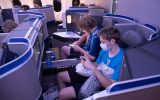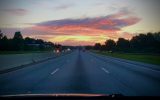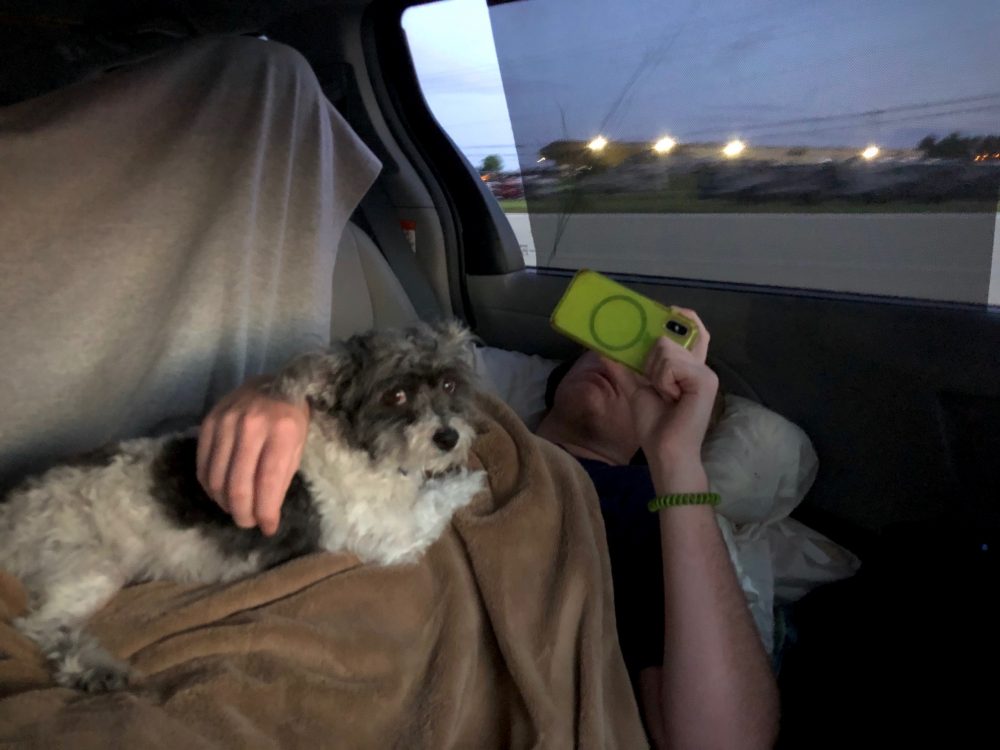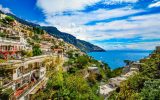Like many of you, I am certifiably stir-crazy right about now. I live in New York City, and I haven’t ventured farther than six miles from my apartment in four and a half months—and that’s just on long walks. So last Thursday, I found myself in the same boat as all the other grounded travelers who showed up for our latest Zoom chat: eager to hear aboutthe essential trips that Brook, Wendy, and Wendy’s husband, Tim, recently took. Not only because I am starving for some vicarious travel, but also because I want to hear reliable first-hand accounts from people I trust—experienced travelers who pay attention to the kinds of details and questions I’ll have when I’m ready to travel again myself. That’s the whole point of our Zoom chat series—to cut through the noise and share the travel intel that’s most relevant to you…and, we hope, soothe some of that restlessness and stoke future dreams of safe adventures.
If you didn’t make it to our “What It’s Really Like to Travel in the U.S. Now” Zoom chat, we’ve collected some of the highlights and tips below. Don’t miss our next get-togethers. On July 16, we’ll talk about smart family travel (including some of our favorite past trips and what those might look like going forward); and on July 23, air travel experts will forecast the near-future of flying. Sign up using our RSVP form, where you can also let us know what other chats you’d like to see and how we can help keep your travel brain inspired until you’re ready to hit the road again. In the meantime, stay safe! —Billie
What it’s like: In the car
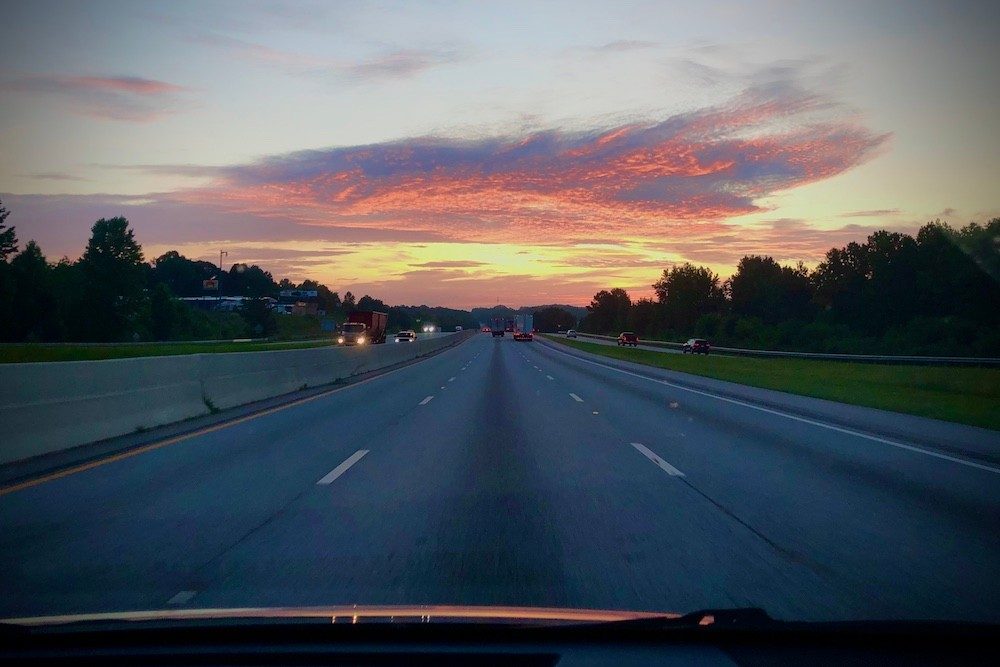
Sunrise in Spartanburg, South Carolina, June 23, 2020
Wendy: “It used to be that on a road trip, the place you stopped to get gas was the same place you got snacks and used the restroom. Now those three things need to be done in three different places. The convenience stores attached to the gas stations had ‘mask required’ signs but no one complied. So instead we used the bathrooms at state welcome centers—they were clean, spacious, and often touchless. To get food, we went to drive-throughs or found out what restaurants were ahead of us on the highway, then we’d call ahead and do curbside pick-up.”
What it’s like: At the airport
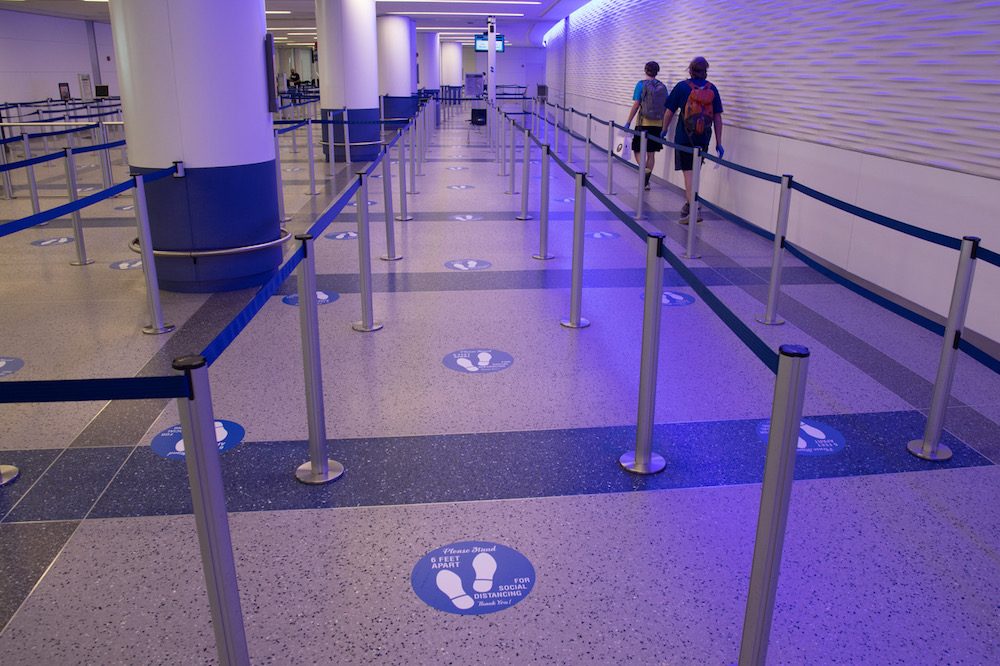
The normally packed security lanes at Newark airport were empty when Tim flew. Note the social-distancing markers on the floor.
Brook: “I had to hand over my boarding pass and ID, I was not able to scan those myself. There were big jugs of sanitizer before and after, and all staff was wearing masks. It was easy to social distance at the airport. It didn’t have that empty apocalyptic feeling but it was noticeably empty, so it was easy to stay away from each other. I told my son to keep his hands in his pockets to keep him from touching anything.”
Tim: “At Newark airport we wore gloves because we knew we’d be going through security and handing papers to people. Once we got through, we took our gloves off because they’d gotten all sweaty. The airport reminded me of a casino at ten in the morning: Yeah, there are a few people there, but it’s pretty empty and not the same scene.”
What it’s like: On the plane
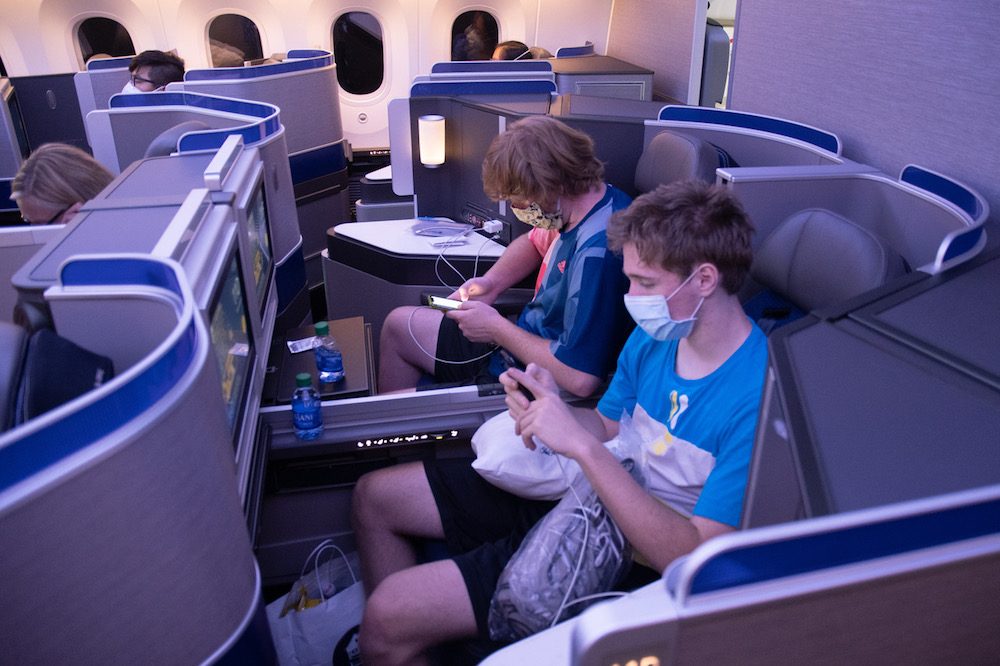
Because of the layout of this 787’s business-class cabin, Tim felt the last row was the safest.
Brook: “My parents bought us business class. That’s not normally how I travel, but we all felt the financial investment was worth it. My son and I flew United on a 757 with the upgraded Polaris class, so the seats were separate private pods. I originally chose the last row of the cabin to be farthest from the flight attendant and closest to the door. But when I got to the airport, I spoke to the gate agent (through Plexiglas) and had him move us to a row that was otherwise empty.”
Tim: “We also splurged on business class—in a United 787—and took the back row so we could be the last on the plane and the first off. We never walked past anyone; we just got on and got in our seats. We did not use the lavatory. We wore masks and also tried goggles. They didn’t work very well; they fogged up. So on the return flight we wore Face Shields in addition to the masks. Leaving the plane, everyone got up and wanted to leave at once. So even though the plane was only a third full, that final moment was problematic and made us uncomfortable.”
What it’s like: Getting to/from the airport
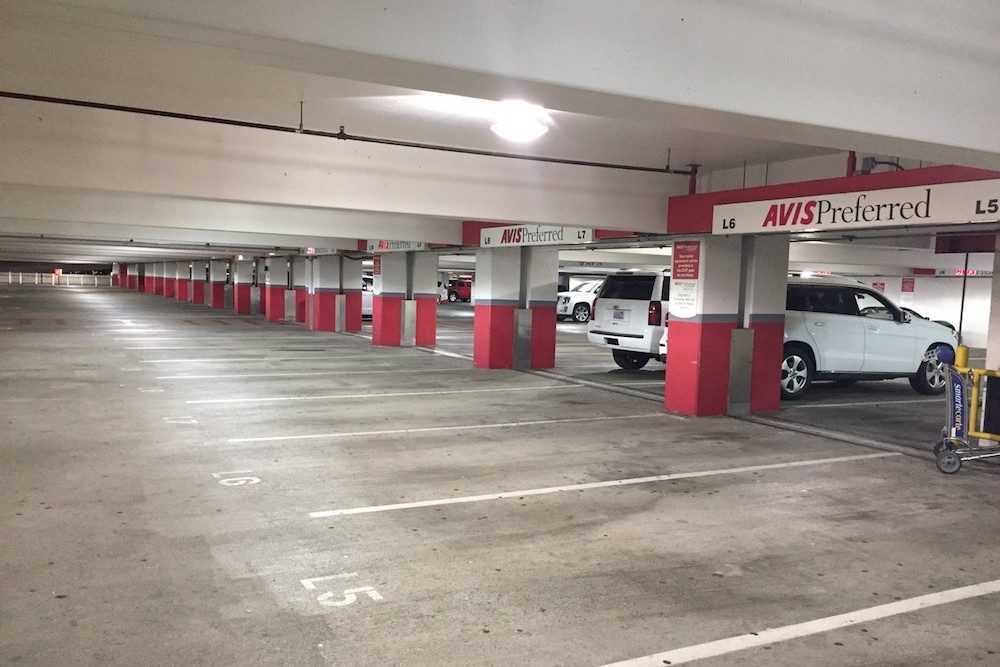
SFO’s normally full Avis rental-car lot had very few cars available.
Tim: “In California, we had reserved a rental car at SFO. There were five people in front of us at Avis, and two people behind the counter, and it took us an hour and a half to get our car. First they said they had no cars available. (Apparently they’re selling off some of their fleet.) Then they said it was taking longer to clean the few cars they do have. So factor in a lot of time when picking up a rental car. Also, leave more time for air trains; they may be running on a slower schedule.”
Billie: “I’ve taken five rideshare trips over the past few months in NYC. Four out of five times, the driver had installed a protective barrier between the front and back seats (usually a custom-fit Plexiglas wall, but one time it was a taped up shower curtain), and in every case, the drivers opened the windows and were patient while I wiped everything down before I got in. Lyft and Uber both require that passengers and drivers wear masks. If you’re not wearing one, the driver can refuse to let you in and cancel your ride; likewise you can cancel the trip for health safety reasons if you are not comfortable.”
What it’s like: At hotels
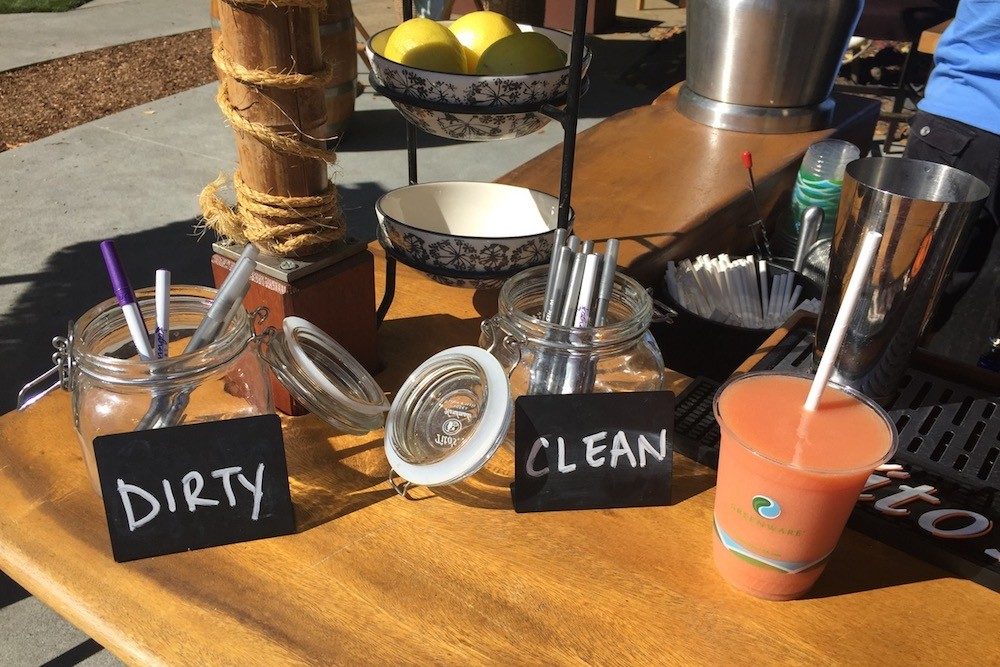
The poolside bar at the Flamingo Resort separated used pens (for signing bar bills) from unused ones.
Tim: “For our nights in Santa Rosa, we picked an older hotel I’ve known for years (The Flamingo Resort) because it had an upstairs balcony with a sliding glass door, and we knew we could keep that open at night, to keep the room ventilated. I gave Charlie a pack of wet wipes, and he wiped everything down (the rental car too). The TV remote was already in a plastic bag, but we wiped it down too. We left the windows open, and did not have the staff come in while we were there. Having the balcony worked out well. We put the Do Not Disturb sign on the door the entire time we were there, and I would go find Housekeeping and trade in towels. Everyone inside the hotel wore masks, but around the pool everyone took them off and stayed socially distant. There were also about a dozen dogs around the pool, which was interesting.
Then we spent a week camping in the Mendocino National Forest. I was pleasantly surprised how militant they were—even at the little general store deep in the woods—about masks and social distancing.”
Be a safer, smarter traveler: Sign up for Wendy’s weekly newsletter to stay in the know. And read real travelers’ reviews of Wendy’s WOW List and use it to plan your next trip.

